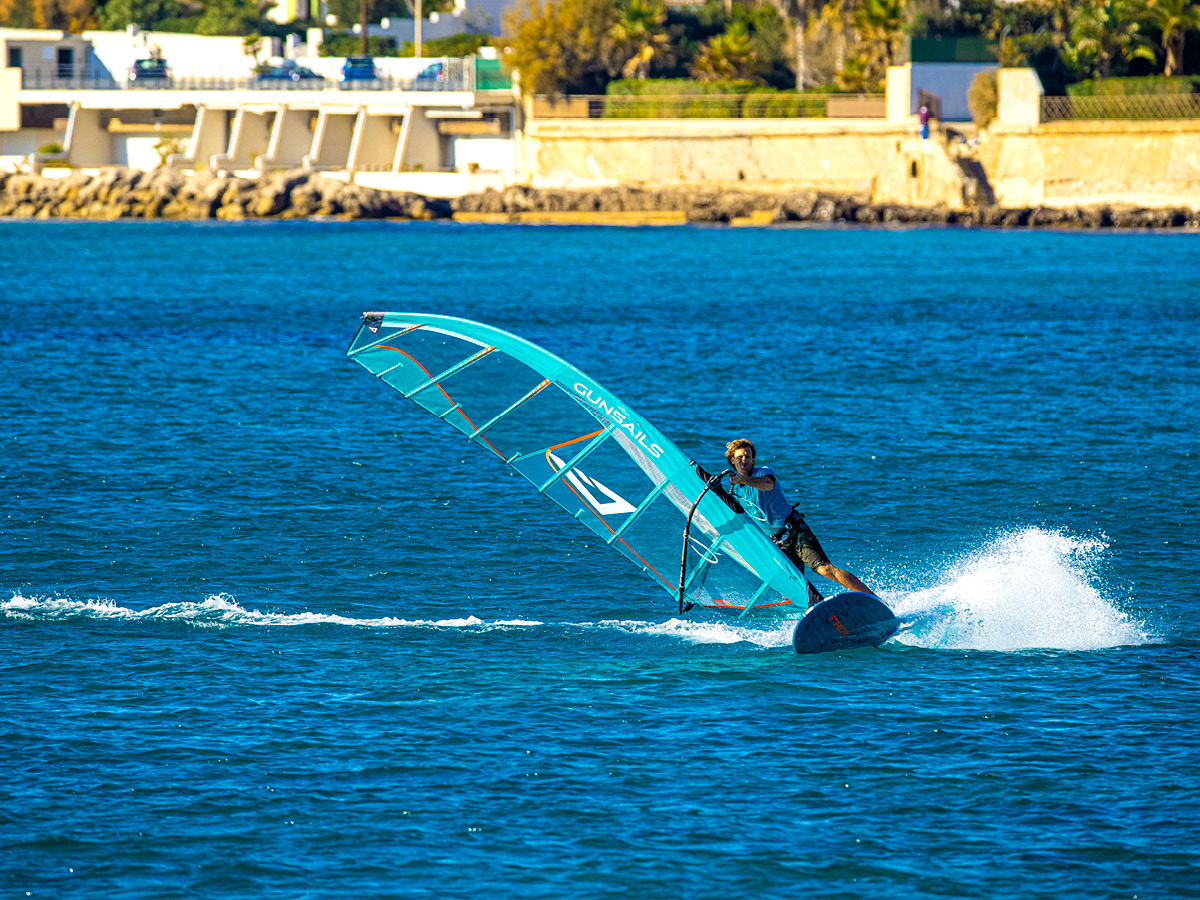BOW
4 CAM SLALOM / FOIL SAIL
Want to try something really new? With the Bow, now in its third year, we are pursuing a completely new concept in sailmaking and the interaction between sail and mast. The Bow's unique ability to adapt dynamically over a huge wind range while continuously developing the same amount of drive has excited many windsurfers.


KEY FACTS:
> 4-Cam Concept Sail for Freerace, Slalom and Foil
> 2 offset clew claws for trim flexibility and easy use of a trim system
> No Loose Leech, the Bow uses more surface
> Special friction bearing that allows rotation of the mast
> 3D Mast Sleeve Shape and Cross Batten Concept
> Neoprene Cover at boom opening for better aerodynamics
> Tack Strap to regulate the tension of the sail foot
> Bow Flex mast is mandatory
Here you find the mandatory BOW Mast.
With the new Bow Flex 2.0 mast generation, this dynamic has been further improved. Thanks to its versatility, the sail is ideal for foil, freerace or slalom. With its deep profile with 4 cams, the sail develops a rich performance and accelerates effortlessly to an exhilarating top speed. Thanks to the special geometry of the sail, as well as the ability of the mast to rotate inside the boom, the profile continuously adapts and the sail always remains easy to control.
In its third year, we made further updates, focusing on the evolution of the Bow Flex mast. The sail construction features additional Kevlar reinforcements to precisely control the stretch of the material and save weight. Instead of outhaul eyelets, the Bow is equipped with Clew Claws, which facilitates the use of a trim system. The success of the Bow continues. Experience the Bow concept and be part of the innovation.
TECH SPECS
| Size m² |
Wish* cm |
Luff cm |
Battens/ Tubes |
Cam | Top | IMCS | Best Mast** | Mast cm |
Price € |
| 6.9 | 205/198 | 493 | 7/7 | 4 | fix | ./. | Bow Flex 70% | 490 | 699,- 599,- |
| 7.8 | 224/216 | 504 | 7/7 | 4 | fix | ./. | Bow Flex 70% | 490 | 709,- 609,- |
| 8.7 | 237/230 | 519 | 7/7 | 4 | fix | ./. | Bow Flex 70% | 490 | 729,- 629,- |
* Upper eyelet / Lower eyelet
** The Bow Flex Mast is mandatory for the Bow sail. The special Friction Bearing is also supplied with the mast.




















